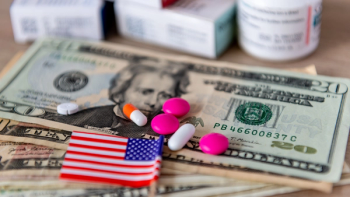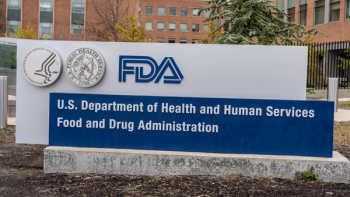
- Pharmaceutical Executive-02-02-2006
- Volume 0
- Issue 0
The Low Cost of High-Impact Ads
All things considered, POS is undervalued and therefore underutilized, given its inherent potential to build recognition and increase demand.
Direct-to-consumer (DTC) drug advertising has been a blessing and a curse for the pharmaceutical industry. On the plus side, DTC ads inform the public, spark interest, and spur action— generating prescriptions and revenue. But DTC has also fueled controversy. If not executed properly, critics charge, ads mislead consumers. It's no secret that consumer groups have been vocal in their criticisms of DTC, arguing that money spent on advertising ($4.15 billion in 2004 according to IMS Health) results in higher healthcare costs and other consequences. Regulatory problems related to DTC have cost companies credibility, not to mention millions and millions of dollars in fines.
Pharmaceutical companies need viable alternatives. One inexpensive way to accomplish many of the same goals as DTC, such as creating product awareness and informing patients, is point-of-sale (POS) advertising.
Building Awareness
Positioned in food stores, retail pharmacies, and mass merchandising chains nationwide, point-of sale ads offer complete in-store placement flexibility. Ads can appear in the over-the-counter (OTC) aisles, at registers or pharmacy counters, in shopping baskets, in the parking lot, or in the pharmacy waiting area. POS can include messaging vehicles for prescription and OTC products in an atmosphere where the patient actually considers health-product options.
Convenient Explanations
Point-of-sale initiatives have received scant notice in part because, next to TV and print, they represent minor budget items. POS carries an extremely low cost-per-thousand (30¢-$3.00) compared to $17.78 for a 30-second TV spot, or $8.61 for the same length spot on radio. Nor do they have the heavy guns of traditional ad agencies behind them. The limited visibility of POS does not create the same buzz as TV and print, nor does it normally win major awards—but POS advertising creates product awareness and builds an informed consumer base.
Equally important, the ads appear in a context where treatment options and patient education are foremost in providers' minds, and information is routinely shared with pharmacists and healthcare professionals. The media buys for this particular type of advertising are typically offered in 4-6 week cycles. Targeted placements could be anywhere that consumers and patients congregate, and the length of the campaign ensures a prolonged exposure to the message.
Because the environment is such an important element of POS, a key strategy in creating a campaign is developing a cohesive strategy for placement. As with any advertising initiative, simply funding "opportunities" is not necessarily good marketing. Production of POS material comes only after a well-developed and intelligent strategy has been designed to reach the target market.
All things considered, POS is undervalued and therefore underused, given its inherent potential to build recognition and increase demand.
The Pharmacist Connection
Existing programs using POS have shown a three to seven percent lift in prescription sales, although some programs have reported rises of 10 percent or higher. There is an average return of $4 to $8 for every dollar spent. Campaign tactics not only drive new prescriptions but also act as refill reminders.
One likely reason for these numbers—and an important factor to consider in POS advertising—is that a pharmacist is always available near the spot where the ad is viewed. A consumer who reads or views an ad at home and has questions may have to wait to get an answer. A consumer viewing a POS ad is only steps away from authoritative information.
For All Intents and Purposes
And pharmacists are a much-used source of health information for consumers: A Harris Interactive survey conducted for the National Association of Chain Drug Stores Foundation (NACDSF) found that 63 percent of all purchasers of prescription medications consulted with a pharmacist over a three-month period. Of these respondents, 39 percent said that in addition to dispensing general information about their prescriptions, pharmacists reviewed dosing information, discussed possible reactions with other medications that they were taking, or gave advice about OTC products.
NACDSF is also piloting an initiative with the Sarasota Group, a coalition of community pharmacy and pharmaceutical manufacturers, to enhance patient empowerment through education.
This includes providing messaging tools to pharmacists, such as brochures to help patients understand how to get the optimum benefit from their prescription drugs, how to find options for affordable prescription drugs, and how to use pharmacists as a trusted resource for healthcare information.
Possibilities Continue to Grow
Today, there are 20,704 traditional chain drug stores, 9,437 supermarket pharmacies, and 6,362 mass-merchant pharmacies, according to the National Association of Chain Drug Stores. More than 3 billion prescriptions are dispensed annually in the United States.
Projections made at the 2020 Needs Conference sponsored by the Pharmacy Manpower Project show that the pharmacy setting will continue to be important: patients continue to want accessible settings where they can actively seek information and education. A report put out by the conference facilitators states, "Patient preference for personal service will continue to support...community pharmacy settings."
It is those trends that provide a real role for POS advertising to contribute to the growth of market share. Moreover, POS disease-state education helps build market and brand awareness in the pre-launch stage. Knowledge can be targeted to a relevant and interested public.
A New DTC
The point-of-sale approach will never replace direct-to-consumer advertising. DTC ads have become vital to the pharmaceutical industry since it uses the powerful mechanisms of TV, radio, print advertising, and the Internet to place drug information directly in front of patients. The industry continues to support consumer advertising, and not just as a means of educating consumers about diseases, symptoms, and available therapies. Companies also aim to enhance the patient's relationship with the healthcare professional.
Fifty-six percent of physicians surveyed in a 2000 survey by Scott-Levin (now Verispan) indicated, "DTC advertising brings in patients to seek treatment that would otherwise go untreated."
However, with the constraints of tighter rules and regulations, companies should seek alternative ways of conducting consumer outreach. After all, consumers want health information—when they are looking for it. A recent Harris Interactive Survey revealed that more than half of consumers are ready for a new approach:
- 35 percent would favor a mandatory ban on DTC for all new prescription drugs approved by FDA for a limited time period
- 16 percent would favor a voluntary ban on DTC for all new prescription drugs approved by FDA so that each pharmaceutical company could decide when to begin advertising to consumers
- 23 percent would oppose any ban on DTC for new prescription drugs approved by FDA
Pharmaceutical marketers can gain a new type of relationship with its end customers by reaching them in the pharmacy, when consumers are thinking about their healthcare and just an aisle away from the pharmacist, who can answer their questions about diseases or brands. In this way, pharma product managers might consider point-of-sale advertising to reach their target audience as a less intrusive patient education and brand awareness vehicle, and cost-effective option for the message, market, and media mix.
Barbara Orr (
Articles in this issue
almost 20 years ago
e-Marketing at the Tipping Pointalmost 20 years ago
Introduction: Opportunites and Challengesalmost 20 years ago
Feelings Outweigh Factsalmost 20 years ago
The Fair and Balanced Road of DTCalmost 20 years ago
Forward-Looking IntelligenceNewsletter
Lead with insight with the Pharmaceutical Executive newsletter, featuring strategic analysis, leadership trends, and market intelligence for biopharma decision-makers.





